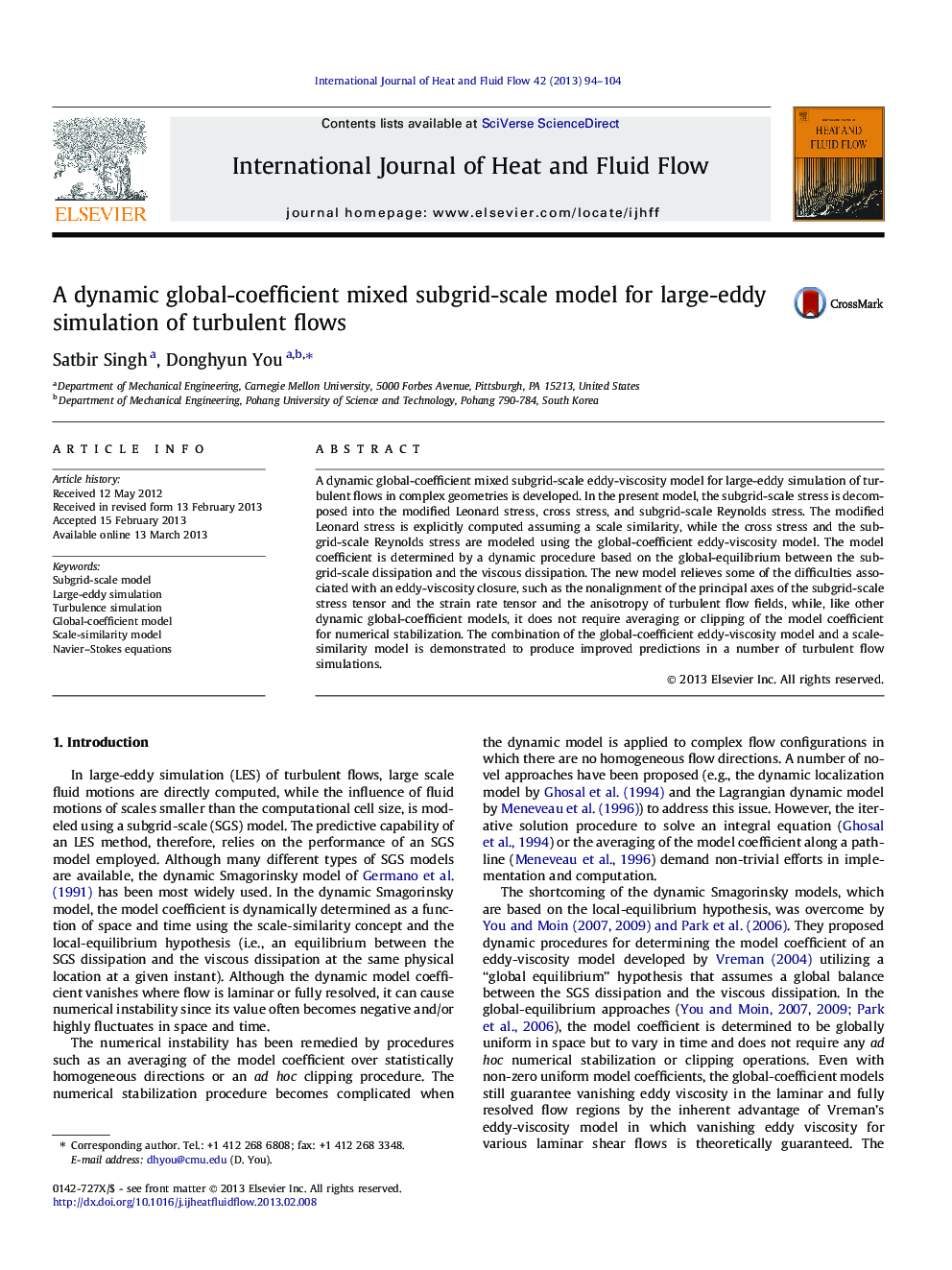| Article ID | Journal | Published Year | Pages | File Type |
|---|---|---|---|---|
| 655597 | International Journal of Heat and Fluid Flow | 2013 | 11 Pages |
A dynamic global-coefficient mixed subgrid-scale eddy-viscosity model for large-eddy simulation of turbulent flows in complex geometries is developed. In the present model, the subgrid-scale stress is decomposed into the modified Leonard stress, cross stress, and subgrid-scale Reynolds stress. The modified Leonard stress is explicitly computed assuming a scale similarity, while the cross stress and the subgrid-scale Reynolds stress are modeled using the global-coefficient eddy-viscosity model. The model coefficient is determined by a dynamic procedure based on the global-equilibrium between the subgrid-scale dissipation and the viscous dissipation. The new model relieves some of the difficulties associated with an eddy-viscosity closure, such as the nonalignment of the principal axes of the subgrid-scale stress tensor and the strain rate tensor and the anisotropy of turbulent flow fields, while, like other dynamic global-coefficient models, it does not require averaging or clipping of the model coefficient for numerical stabilization. The combination of the global-coefficient eddy-viscosity model and a scale-similarity model is demonstrated to produce improved predictions in a number of turbulent flow simulations.
► A new SGS model is developed for LES of turbulent flows in complex geometries. ► A dynamic global-coefficient SGS model is coupled with a scale-similarity model. ► Overcome some of difficulties associated with eddy-viscosity closures. ► Does not require averaging or clipping of the model coefficient for stabilization. ► The predictive capability is demonstrated in a number of turbulent flow simulations.
